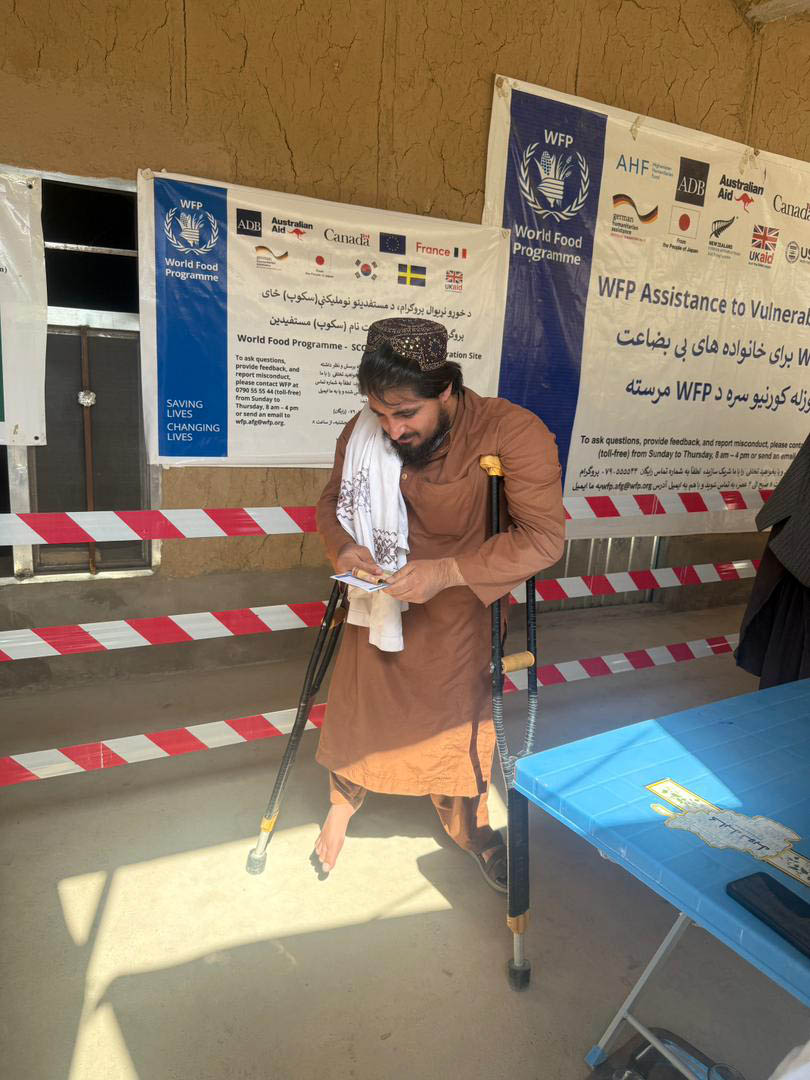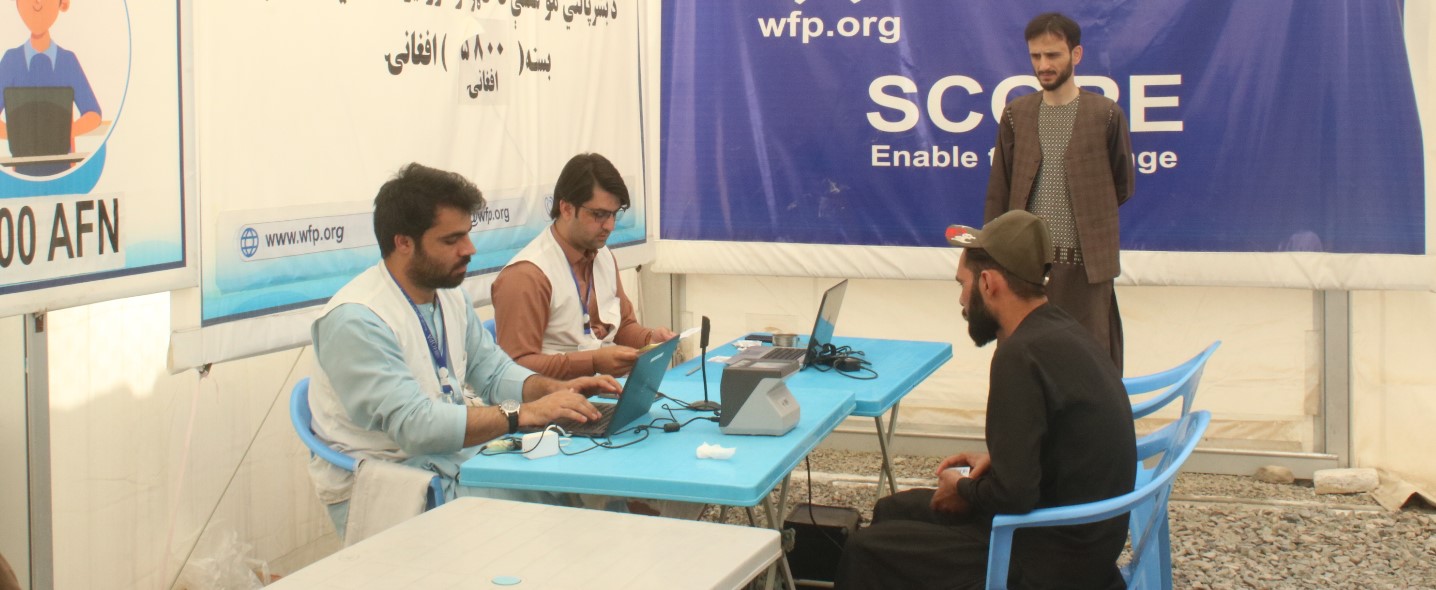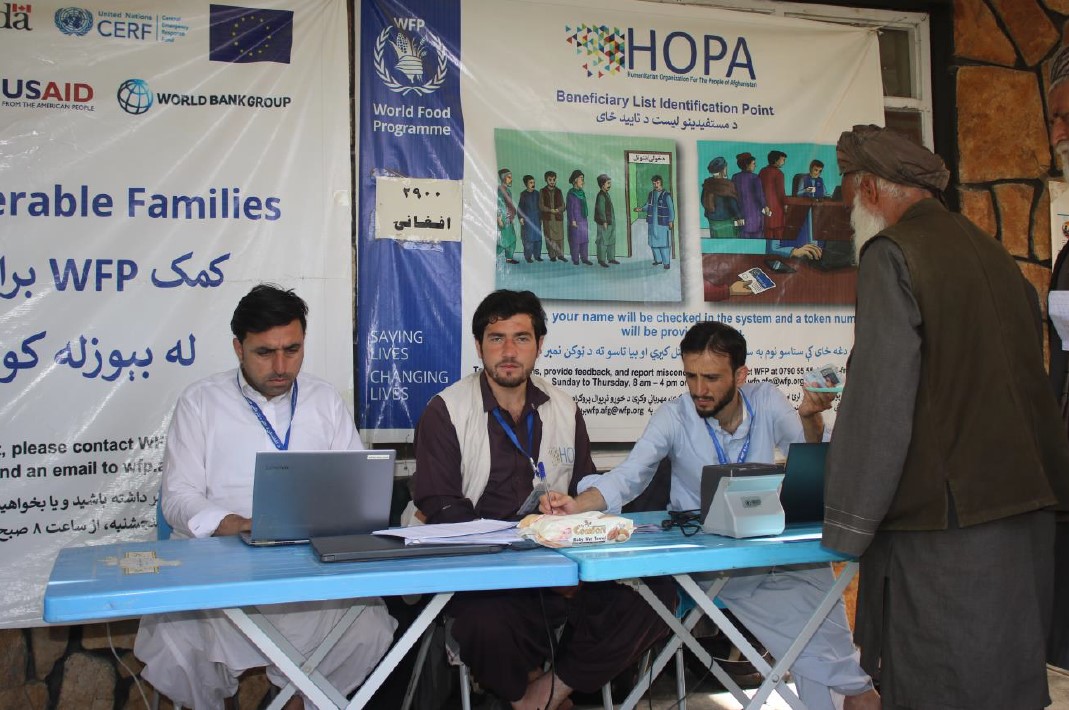
Cash-Based Transfers (CBT) & Food Distribution
1. Introduction
The Humanitarian Organization for the People of Afghanistan (HOPA), in partnership with the United Nations World Food Programme (WFP), successfully implemented the 4th cycle of Cash-Based Transfer (CBT) distribution in Kandahar City from March 12 to March 23, 2025. This distribution aimed to provide financial assistance to vulnerable households, allowing them to purchase food and essential items based
on their individual needs.
The distribution was conducted at multiple sites across Kandahar City, covering all 15 districts. The primary distribution center was established at Spozmai Saloon in PD-2, with additional distribution points set up in various districts to ensure maximum accessibility and efficiency.
A total of 8,478 households received direct cash assistance through this program, with a total disbursement of 24,586,200 Afghanis (AFN), equivalent to 354,171.05 USD. The distribution was carried out in a fair, transparent, and organized manner, ensuring that all eligible beneficiaries, including female-headed households and persons with disabilities, received their entitlements without difficulty.
One of the key improvements in this cycle was the full segregation of male and female distribution processes, which significantly enhanced efficiency, security, and beneficiary satisfaction. Separate distribution sites and staff were assigned for male and female beneficiaries, leading to reduced waiting times, improved accessibility, and a more dignified process for all participants. This step was highly
appreciated by beneficiaries, as it ensured a smooth and respectful distribution experience.
2. Distribution Overview
The total planned number of households for this cycle was 8,488, out of which 8,478 successfully received their cash assistance.
The distribution was scheduled over multiple days, covering different districts sequentially to ensure
smooth operations and avoid overcrowding. Below is a summary of the daily cash distribution breakdown:
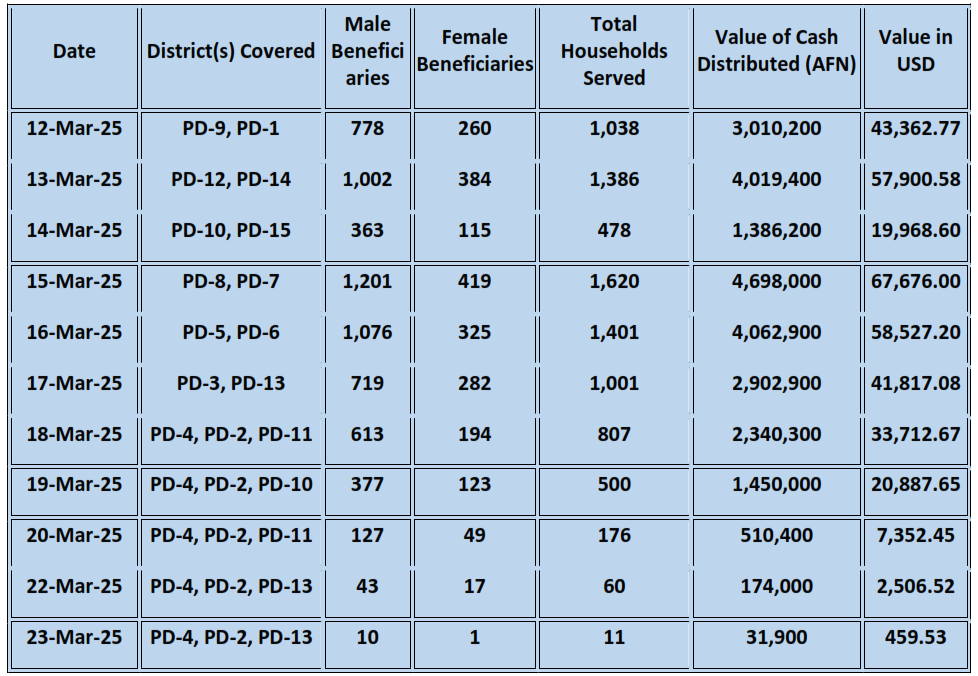
3. Nutritional Support – LNS and WSB Distribution In addition to the cash distribution, nutritional support was also provided, benefiting a significant number of children and pregnant and breastfeeding women (PBW). A breakdown of the nutritional support is provided below:

4. Gender and Protection Measures
HOPA prioritized gender sensitivity and protection during this distribution, implementing strict segregation of male and female distribution points.
Separate queues, waiting areas, and distribution booths were established for men and women, ensuring a comfortable and dignified experience for all beneficiaries.
Female staff members exclusively managed women’s distribution sections, allowing women to collect their cash assistance without cultural or social barriers.
This approach resulted in reduced wait times, increased transparency, and enhanced accessibility, which was highly appreciated by beneficiaries.
Beneficiaries expressed their gratitude towards HOPA’s management for implementing this system, noting that it made the process quicker, safer, and more efficient.
5. Challenges and Recommendations
5.1 Challenges Encountered
10 absentee households (4 female-headed, 6 male-headed) did not show up for collection.
Verification delays for newly added beneficiaries due to system updates.
Logistical coordination challenges across multiple districts required additional planning.
5.2 Recommendations for Future Cycles
Implement automated tracking for absentee follow-ups.
Strengthen coordination with WFP to streamline new beneficiary verification.
Continue gender-segregated distributions to maintain efficiency and beneficiary comfort.
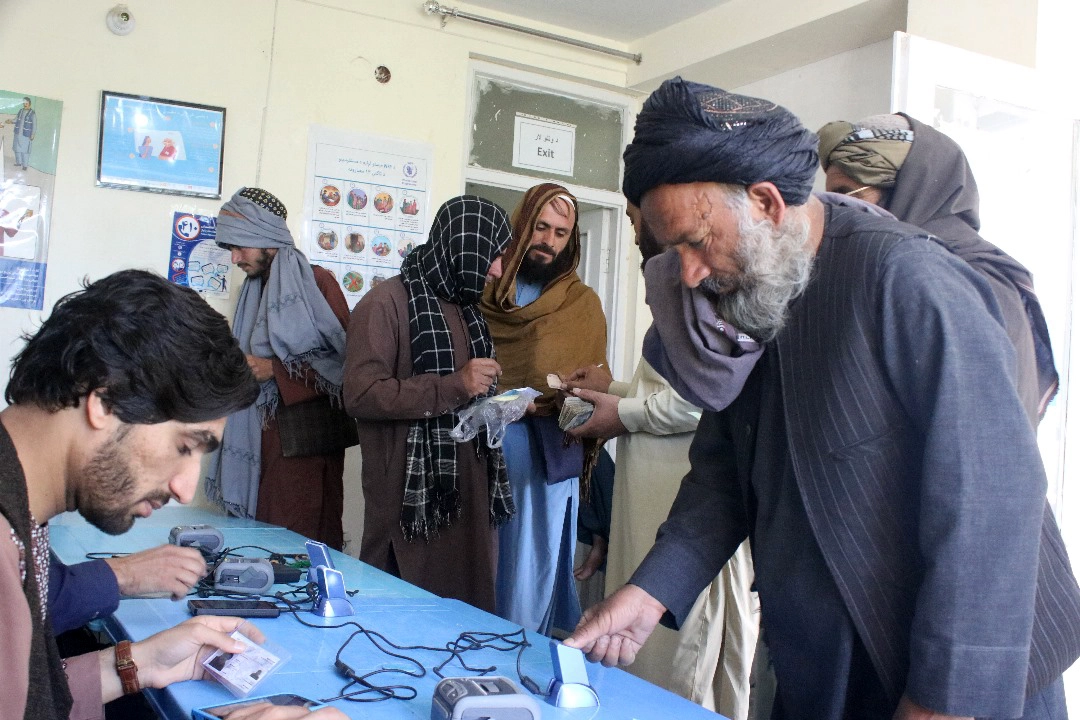
6. Gender-Segregated Distribution Approach
During the March 2025 cycle of the Cash-Based Transfer (CBT) distribution in Kandahar City, HOPA implemented a fully segregated distribution process, ensuring a culturally sensitive, efficient, and transparent system. The decision to segregate male and female beneficiaries for the entire distribution cycle, from registration to voucher issuance, was driven by the goal of enhancing accessibility and
security for women while maintaining smooth operations. By assigning separate sites and staff for male and female distributions, HOPA respected the community's cultural norms and created a more inclusive and respectful environment for beneficiaries.
Key Features of the Segregated Distribution Process:
Separate Distribution Sites and Staff:
Female-headed households (HH) were assigned to a designated area with separate staff.
Male-headed households (HH) were directed to separate distribution areas, where staff handled their needs, maintaining cultural propriety and ensuring privacy.
Benefits for Female Beneficiaries:
The segregated system significantly improved the participation of women, particularly female-headed households.
It ensured that they felt secure and respected during the process, encouraging them to engage fully in the distribution.
Many female beneficiaries appreciated the clear separation, as it removed the discomfort associated with mixed-gender interactions in a traditionally conservative environment.
Community Feedback:
Both male and female beneficiaries expressed their satisfaction with the segregated model. Female-headed households, in particular, felt more empowered to collect assistance without the risk of judgment or harassment.
Community leaders and elders also praised HOPA's approach, recognizing it as a culturally appropriate measure that respected local customs while addressing the needs of the community.
The impact of the segregated process extended beyond comfort and security; it also contributed to significant operational improvements. The division between male and female lines minimized waiting times and overcrowding, making the entire distribution process faster and more organized. Beneficiaries moved through the lines more efficiently, and with fewer disruptions, the distribution cycle proceeded smoothly.
Efficiency and Time Management:
Reduction in Waiting Times:
By creating separate lines for male and female beneficiaries, HOPA improved the flow of the distribution process, ensuring that beneficiaries spend less time waiting for their vouchers or cash.
The gender-segregated approach reduced bottlenecks and allowed for better management of the crowd, particularly during peak distribution times.
Better Queue Management:
Each distribution site had a designated staff member responsible for managing the queue, ensuring that beneficiaries received assistance promptly and that there were no delays due to confusion or mismanagement.
Reduced Time Consumption:
The entire process was completed more quickly compared to previous distributions. This was due to clearer divisions, faster management of individual groups, and a more organized flow of participants.
Transparency and Accountability:
Improved Monitoring and Reporting:
The segregated process allowed for more transparent monitoring of the distribution. With clear distinctions between the two groups, there was less chance of overlap or misreporting, ensuring that each beneficiary received the correct amount of assistance.
Monitoring teams, which were also gender-balanced, contributed to maintaining high standards of accountability and reduced the risk of fraud or favoritism.
Feedback Mechanisms:
A robust feedback system was in place, allowing beneficiaries to voice concerns and suggestions. This helped identify and address any issues promptly, ensuring continuous improvement for future distributions.
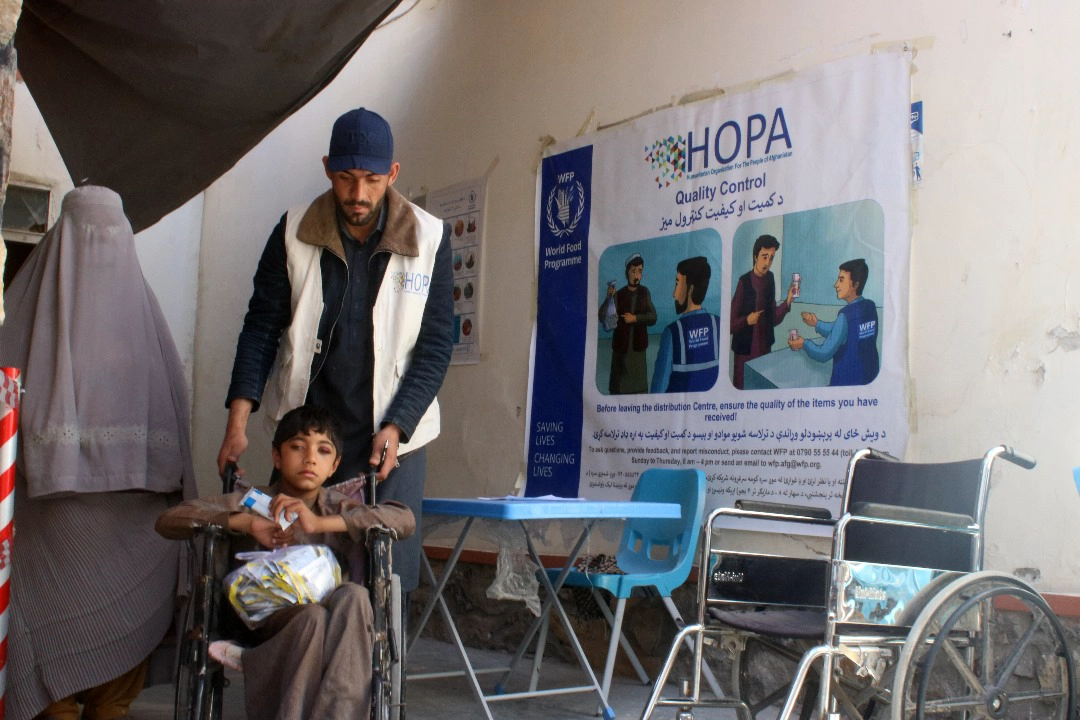
8. Conclusion
The March 2025 CBT distribution cycle in Kandahar City was successfully completed, serving 8,478 households with direct cash assistance worth 24,586,200 AFN. The integration of gender-sensitive measures, improved queue management, and additional nutritional support significantly enhanced the overall impact.
The segregated distribution model implemented by HOPA during the March 2025 CBT cycle in Kandahar City was highly effective in improving both the experience and the operational efficiency of the distribution process. The approach not only enhanced security and accessibility for female beneficiaries but also optimized the flow of beneficiaries, reducing waiting times and making the process smoother and more transparent. With positive feedback from the community and improved operational outcomes, this model set a new standard for culturally sensitive and efficient humanitarian aid delivery. Moving forward, HOPA plans to continue using this model, adapting it based on lessons learned and community feedback, to ensure that future distributions are even more effective.
HOPA remains committed to delivering humanitarian assistance with dignity, transparency, and efficiency, ensuring that vulnerable populations receive the support they need in an inclusive and effective manner.


